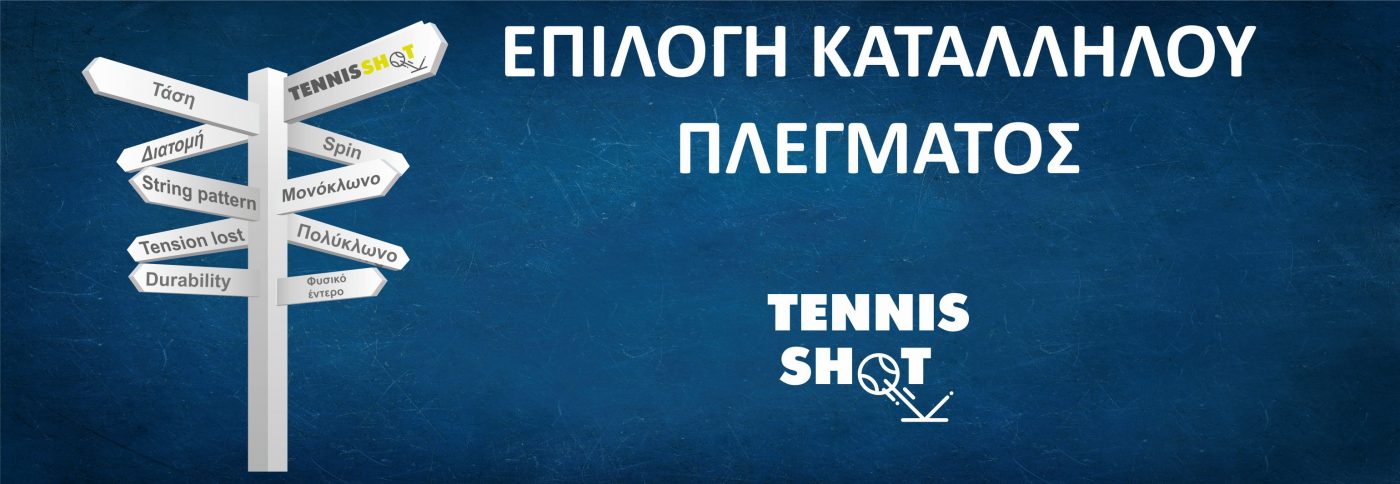
The correct selection of the reference tension when stringing your racket as well as the selection of the appropriate string are very important elements and must be done based on your personal needs.
There are a wide variety of different string types, multiple brands to choose from and even when you find a string that suits you there are different thicknesses (diameter-gauge) of the same mesh and different tensions you can string your racket with. The good news is that with the help of a qualified racket technician, choosing tennis strings doesn’t have to be so difficult or confusing.
There are 9 main factors that influence both individually and in combination your choice so you should discuss with your racket technician the “kgs” in which you will string your racket.
The basic rule for the selection of thestring tension when stringing your racket is:
More Kg for control and less Kgs for power
But let’s see the factors which affect the reference tension:
The stifness of the frame of the racket, the head size and the string pattern (open ή closed pattern) affect the reference tension.
Depending on the string type, we must also change the Kg that we string our racket For example, when we string with polyester or Kevlar strings we must reduce the tension in comparison with multifilament or natural gut strings.
The 3 main characteristics of the string are:
- stiffness)
- Its ability to produce spin (spin pottencial)
- The % tension loss (tension loss)
We must take into account all 3 of these characteristics both individually and in combination when choosing the desired tension in our racket.
If the player is used to stringing his racquets on economical machines drop weight or (crank) must know that there must have been significant tension losses when stringing his racquet. Thus, changing to a professional continuous pulling machine (constant pull) must take this factor into account and lower the reference tension a bit.
On hard surfaces the ball tends to move faster because the ground absorbs less energy from the ball. To regain control of the fast game we need to increase the tension. Conversely, on clay surfaces the ball moves more slowly. Players have more control and reaction time, so we need to reduce the Kg of the racket in order to have strength and depth in our strikes.
At high temperatures the speed of the ball increases because the rubber from which the ball is made softens from the heat, becoming more flexible and easier to move. So, it would be good to increase the weight of our racket a little.
The opposite happens in cold and wet weather.
At higher altitudes the balls move faster because there is less friction in the thinner air.
When a player is used to playing close to the baseline they need a lower tension to have additional power and deep shots. A player who relies on the serve or often goes up to the net will prefer more kg for control and precision in his strikes.
Arm or wrist problems may require reduced tension to achieve depth and power without making the racquet swing as difficult.
